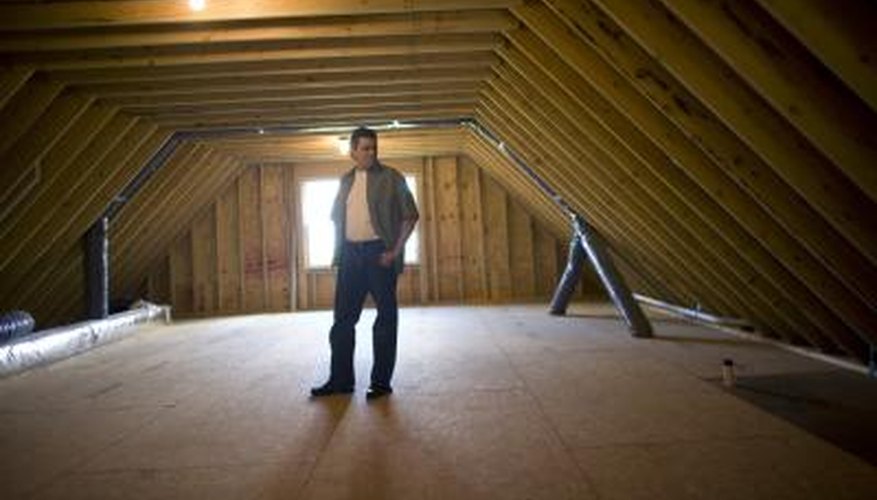Even if you don't store items or create living space in the attic, you need a light in that area. It's important to periodically check out the roof interior and attic for rain leakage or to inspect for birds or other animals living there. A light will show you if animals are building nests around electrical wiring. For example, you might need to nail wiring over louvered vents at the ends of your home to keep out the animals. A light in the attic can make it easier to build a staircase into the attic or evaluate the space for storage.
Open an access to your attic, and install plywood boards for a walking area. Cut these boards in 60 cm (2 foot) wide sections, so the electrician can move around a large area. Nail them to your rafters. You might not wish to install flooring in the attic, but your electrician will need support flooring. Hire an electrician who is well-versed on electrical standards.
- Even if you don't store items or create living space in the attic, you need a light in that area.
- You might not wish to install flooring in the attic, but your electrician will need support flooring.
Buy a fixture that you will install at least 1.8 m (6 feet) off the attic floor. The floor would be considered the top of the floor joists. If you can get an A-frame ladder into the attic, have the light installed as high as possible on the central peak. Buy a sturdy outdoor-quality fixture that can survive possible rain leakage. Buy a light with a cover shaped with a wide bottom. This will give the light beam a broad base for shining out in all directions.
Check out the wiring in the attic area to define where to splice the wiring for the light fixture. Only a licensed electrician can assess an acceptable juncture for splicing. In some cases where you can find no acceptable splicing point, you will need to run the wiring all the way from the breaker box and up the walls into the attic.
- Buy a fixture that you will install at least 1.8 m (6 feet) off the attic floor.
- In some cases where you can find no acceptable splicing point, you will need to run the wiring all the way from the breaker box and up the walls into the attic.
Secure the light to a high beam in the attic with appropriate metal fittings. Install a bright bulb. Install a light switch next to the attic access door or hatch, and paint the cover with fluorescent paint. This will make the switch easier to find in a hurry. If there is a nearby side wall in the room below the attic door, run the wiring for the wall switch to this wall. Turn the light on before you climb into the attic space.
WARNING
Don't run a flimsy light into an attic that you hang temporarily. Plenty of people have strung extensions cords around attics and basements for light fixtures and caught their homes on fire. If rodents or other small animals get into the attic, they may chew the exposed wiring. Birds bringing high piles of nesting materials into rafter areas are a fire hazard around wiring as well. Run wiring to your light fixture in the attic through flexible conduit to protect it.
